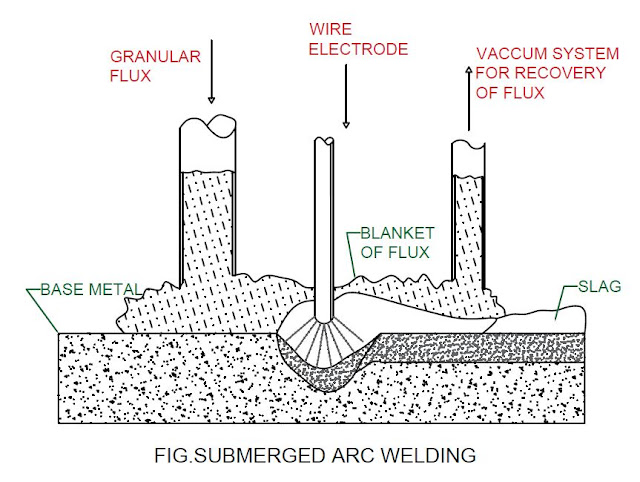Introduction and Working Principle:
In the Submerged Arc Welding (SAW) process, the electric arc is established between the consumable electrode wire and the piece of work.
Since during this process, welding is and also the weld pool is totally submerged under cover of granular fusible and molten flux, therefore, it is known as thus.
During welding, granular motion is liquefied utilizing heat produced by bend and structures front of liquid transition layer which dodges tainting of outside gases.
The liquid motion responds with the pollutants inside the liquid weld metal to make a slag that skims over the outside of the weld metal.
A layer of slag over the liquid weld metal results.
Increased protection of weld metal from atmospheric gas contamination and so improved properties of the weld joint.
The reduced cooling rate of weld metal.
Advantages of SAW:
- High profitability because of high statement pace of the welding metal and capacity to weld ceaselessly without interferences as an anode is taken care of from a spool, and the interaction works under 100% obligation cycle.
- High depth of infiltration permits the welding of thick areas.
- Smooth weld bead is created without stress raisers as SAW is distributed while not sparks, smoke, and spatter.
Limitation of SAW:
- The invisibility of welding arc during welding.
- Trouble in keeping up hill of the transition cover around of welding and round and hollow the bend in odd positions segments of little distance across.
- Increased tendency to melt through when welding thin sheets.
Application of SAW:
- Submerged arc welding is employed for the welding of various grades of steel in many sectors like shipbuilding, offshore, structural, and pressure vessel industries fabrication of pipes, penstocks, LPG cylinders, and bridge girders.
- Aside from the welding, SAW is likewise utilized for surfacing destroyed pieces of enormous surface regions for various purposes like recovery, hard confronting, and cladding.
- The average utilization of lowered bend welding for weld surfacing incorporates the surfacing of roller barrels and wear plates.
- Submerged arc welding is widely used for cladding carbon and alloy steel with stainless steel and nickel alloy deposits.








0 Comments